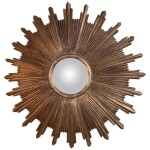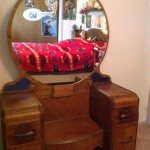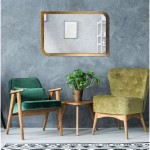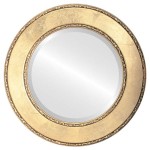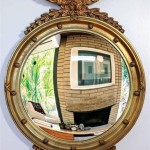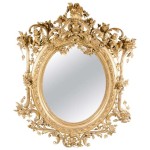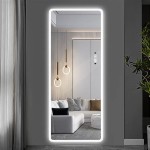Cutting a Mirror with a Glass Cutter: A Comprehensive Guide
Cutting a mirror involves scoring the glass surface with a specialized tool, then applying controlled pressure to separate the pieces along the score line. This process requires precision and the right tools to achieve a clean break and avoid shattering the mirror. While seemingly straightforward, successfully cutting a mirror demands understanding the techniques and safety precautions involved.
Essential Tools and Materials
Proper preparation is paramount. Gathering the necessary tools ensures a smooth and efficient cutting process. The following items are crucial:
- Glass Cutter: Choose a quality glass cutter, either oil-fed or carbide-tipped.
- Cutting Surface: A flat, stable surface, like a thick piece of plywood covered with felt or thick cloth, is essential to protect both the mirror and the cutting tool.
- Straight Edge/Ruler: A sturdy straight edge, preferably metal, is needed to guide the cutter for straight cuts. Specialized circle cutters are available for curved cuts.
- Measuring Tape: Accurate measurements are critical for achieving the desired mirror size.
- Safety Glasses: Protect eyes from potential glass shards.
- Gloves: Heavy-duty gloves shield hands from sharp edges and provide a better grip.
- Mirror: Ensure the mirror is clean and free of debris.
- Lubricant (for oil-fed cutters): Cutting oil keeps the cutter wheel lubricated and helps produce a cleaner score.
- Running Pliers/Breaking Pliers: These tools help separate the scored glass.
Preparing the Mirror and Workspace
Before beginning, ensure the mirror surface is thoroughly cleaned with glass cleaner to remove any dust or grime that could interfere with the cutting process or cause the cutter to skip. The cutting surface should be clean, stable, and large enough to support the entire mirror. Positioning the mirror on the cutting surface with ample space around it allows for comfortable maneuvering during the cutting process.
Scoring the Mirror
Accurate scoring is the foundation of a successful cut. Using the measuring tape, carefully mark the desired cutting line on the mirror surface with a grease pencil or fine-tipped marker. Align the straight edge firmly along the marked line, ensuring it won't shift during the cut. Hold the glass cutter firmly, applying consistent, moderate pressure, and draw it along the straight edge in a single, smooth motion, from one edge of the mirror to the other. Avoid repeating the scoring process on the same line, as this can weaken the glass and lead to uneven breaks.
Breaking the Mirror Along the Score Line
Once the mirror is scored, the next step is to separate the pieces. For smaller cuts, gently applying pressure on either side of the score line may suffice. For larger mirrors, running pliers or breaking pliers are indispensable tools. Position the pliers along the score line with the center of the pliers' jaw directly beneath the score. Apply gentle, even pressure to the pliers handles to initiate the break. The mirror should separate cleanly along the scored line. Alternatively, gently tapping the underside of the score line with a small object like the handle of a screwdriver can also initiate the break.
Cutting Curves in Mirrors
Cutting curves requires a different approach. Employ a circle cutter or a template to guide the scoring process. A circle cutter typically consists of a suction cup base and an adjustable arm with a cutting wheel. Secure the suction cup to the mirror surface and adjust the arm to the desired radius. Rotate the cutter around the center point, applying consistent pressure to score the glass. For more complex curves, create a template from cardboard or thin plywood and use it as a guide for the glass cutter.
Troubleshooting Common Issues
Several problems can arise during the mirror cutting process. Understanding these potential issues and their solutions can save time and materials:
- Rough or Chipped Edges: This often results from insufficient pressure during scoring or a dull cutter wheel. Ensure consistent pressure and replace the cutter wheel as needed.
- Uneven Breaks: Uneven breaks typically occur from multiple scoring attempts or an unstable cutting surface. Score the mirror only once with a smooth, continuous motion on a stable surface.
- Cracks Extending Beyond the Score Line: Excessive pressure during breaking or weaknesses in the glass can cause cracks. Apply gradual, controlled pressure to separate the pieces.
Safety Precautions
Working with glass necessitates prioritizing safety. Following these precautions minimizes the risk of injury:
- Always wear safety glasses and gloves.
- Keep the work area clean and free of clutter.
- Dispose of broken glass pieces carefully in a designated container.
- If working with large mirrors, consider having an assistant to help with maneuvering and breaking.
With careful preparation, the right tools, and proper technique, cutting a mirror can be accomplished successfully. Practicing on smaller pieces of glass before attempting larger projects can build confidence and proficiency.

How To Cut Mirror Glass Quick

How To Cut Mirror For Diy Mirrored Furniture Salvaged Inspirations

How To Cut Mirror For Diy Mirrored Furniture Salvaged Inspirations

Glass Cutting Trick Without Cutter With A Knife

How To Cut A Mirror Comprehensive Guide

How To Cut A Mirror Without Glass Cutter 13 Steps

How To Cut A Mirror Without Glass Cutter 13 Steps

How To Cut Glass Mirrors

Frkb Ceramic Glass Cutter Blade Oil Fed Diy Mirror Cutting Tool In Buy

Tsv Glass Cutter Tool Anti Slip Pencil Style Carbide Tip Cutting For 3 12mm Mosaic Tile Mirror Com

